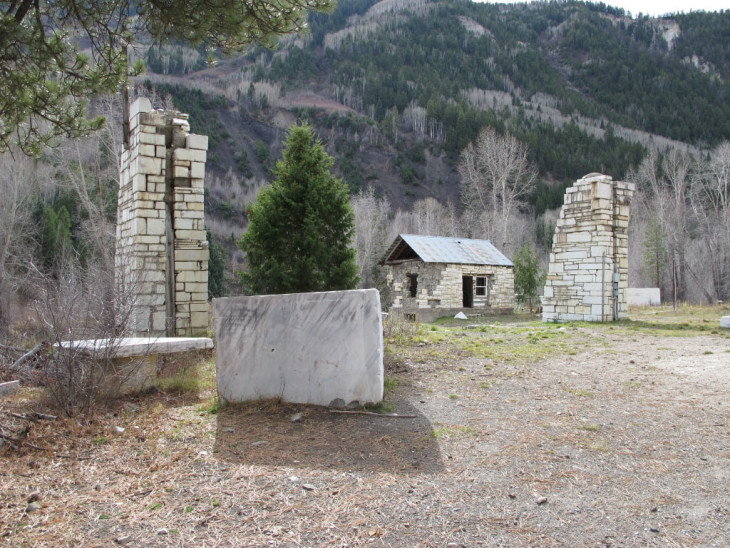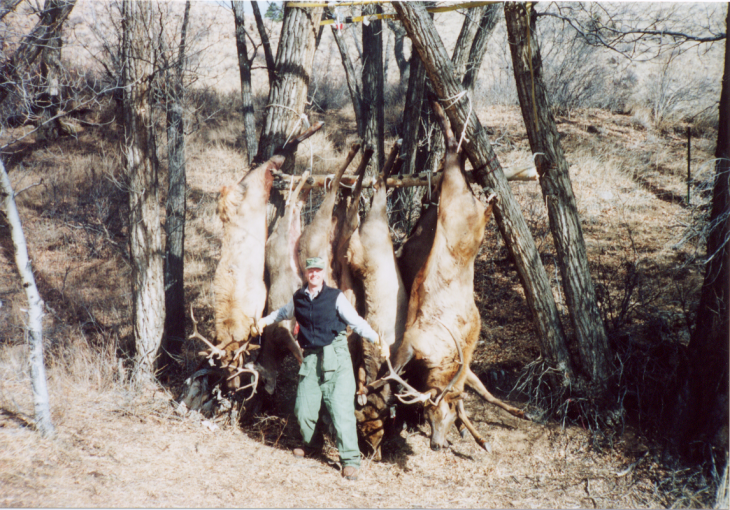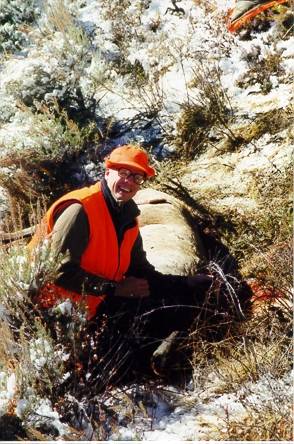Montezuma grew up near the site of Colorado’s first silver discovery in 1863. With the transportation problems, the camp grew slowly, with a population of around 200 in the early 1870′s. By the mid 1880′s, Montezuma had two stores, two hotels, a schoolhouse, and a weekly newspaper. As the town grew, it became an important mining camp for a number of mining camps such as the Tiger, the Silver King, the Queen of the West, and the New York.
According to various sources, H.M. Teller was the first to strike gold here. The story probably goes that way as Teller later became a senator for Colorado, and was important in its history. Various reports show that Teller was merely among the first to prospect in the region, and he and other, including D. C. Collier, made their strikes at just about the same time. Collier was perhaps more important to Montezuma than Teller. Collier suggested the name Montezuma for the late Aztec ruler of Mexico. Collier Mountain, on which many of the best strikes were located, is just above the town.
Montezuma was threatened by a forest fire in 1889, which caused heavy damage to a number of other camps in the area. In 1958, a flash fire swept through the town, destroying a hotel, the town hall, two houses, six garages, and damaging several other buildings. Almost half of the town’s population of 75 were made homeless. The fire came at a time when Montezuma was experiencing a some better times. Although not yet a ghost town, it was hovering near the brink with only 12 or so residents.
In current times, Montezuma is a quiet little mountain town with a few dedicated residents. Montezuma grew up near the site of Colorado’s first silver discovery in 1863. With the transportation problems, the camp grew slowly, with a population of around 200 in the early 1870′s. By the mid 1880′s, Montezuma had two stores, two hotels, a schoolhouse, and a weekly newspaper. As the town grew, it became an important mining camp for a number of mining camps such as the Tiger, the Silver King, the Queen of the West, and the New York.
According to various sources, H.M. Teller was the first to strike gold here. The story probably goes that way as Teller later became a senator for Colorado, and was important in its history. Various reports show that Teller was merely among the first to prospect in the region, and he and other, including D. C. Collier, made their strikes at just about the same time. Collier was perhaps more important to Montezuma than Teller. Collier suggested the name Montezuma for the late Aztec ruler of Mexico. Collier Mountain, on which many of the best strikes were located, is just above the town.
Montezuma was threatened by a forest fire in 1889, which caused heavy damage to a number of other camps in the area. In 1958, a flash fire swept through the town, destroying a hotel, the town hall, two houses, six garages, and damaging several other buildings. Almost half of the town’s population of 75 were made homeless. The fire came at a time when Montezuma was experiencing a some better times. Although not yet a ghost town, it was hovering near the brink with only 12 or so residents.
In current times, Montezuma is a quiet little mountain town with a few dedicated residents.




























